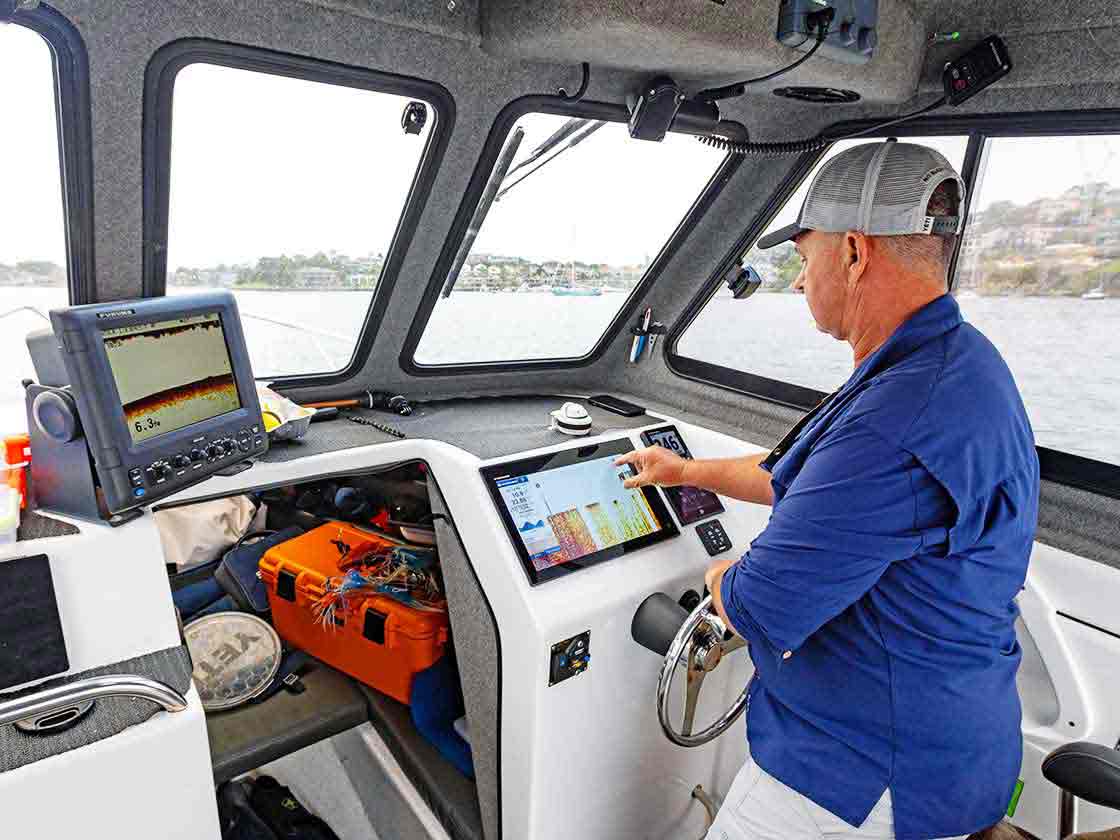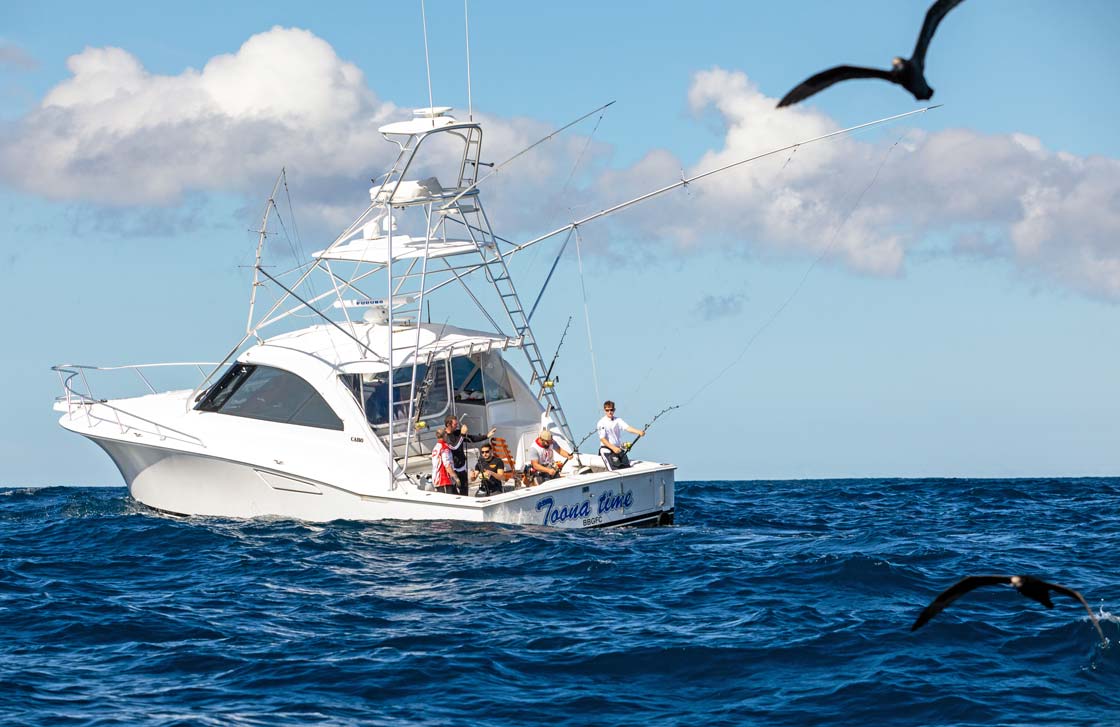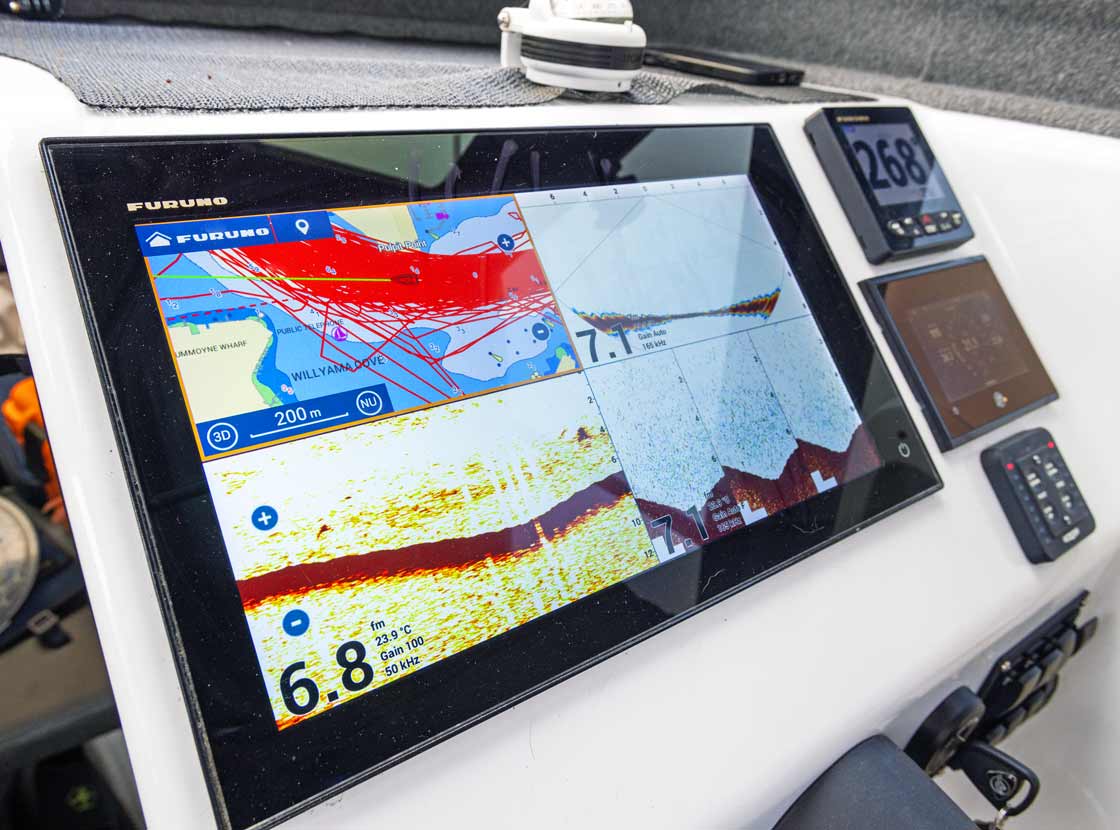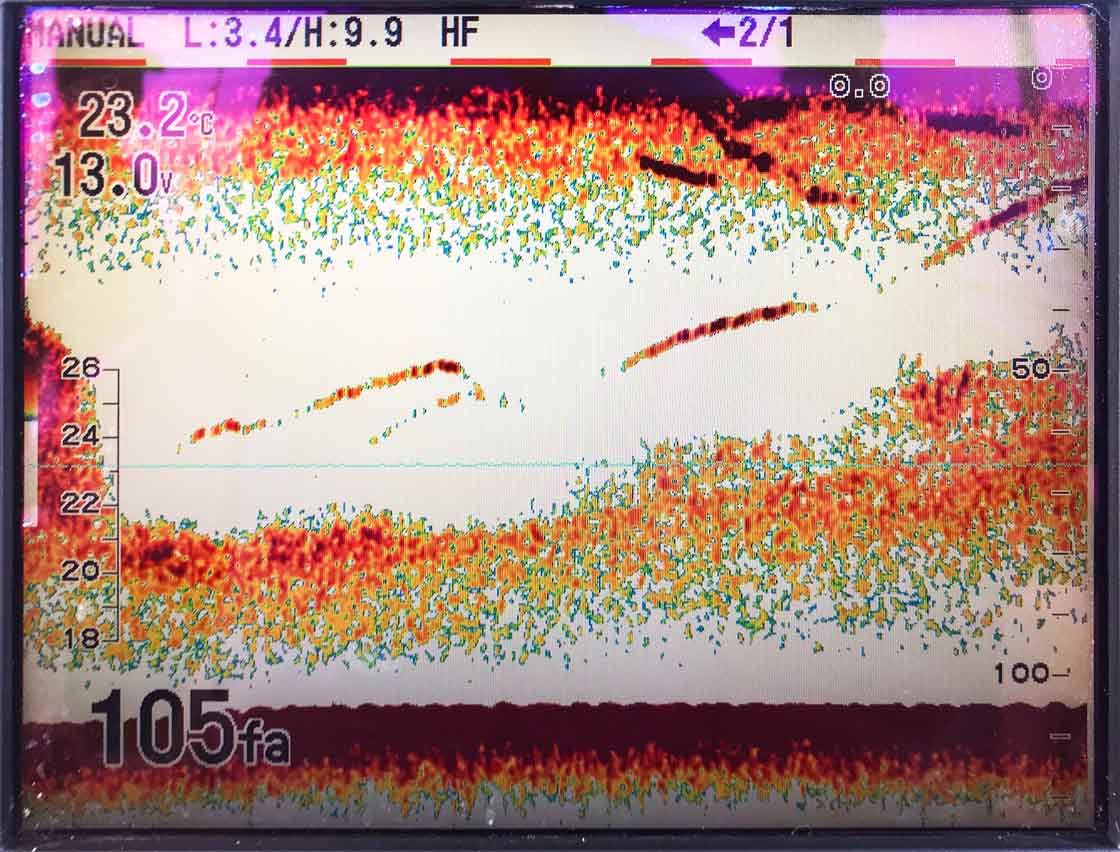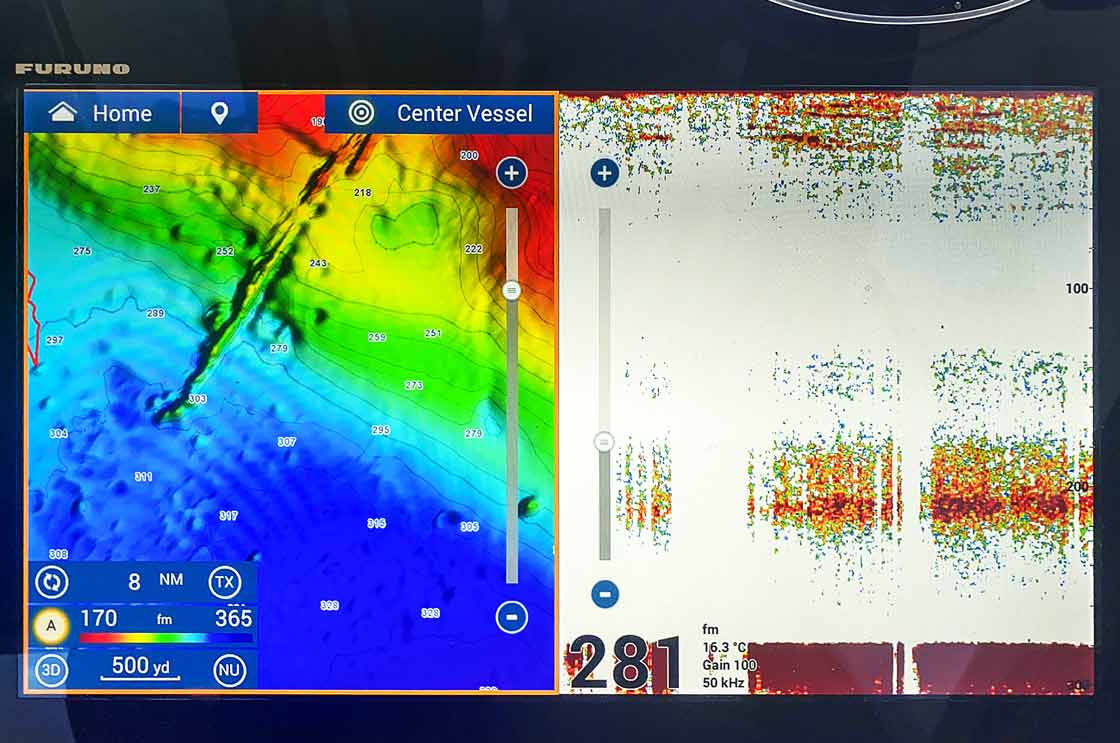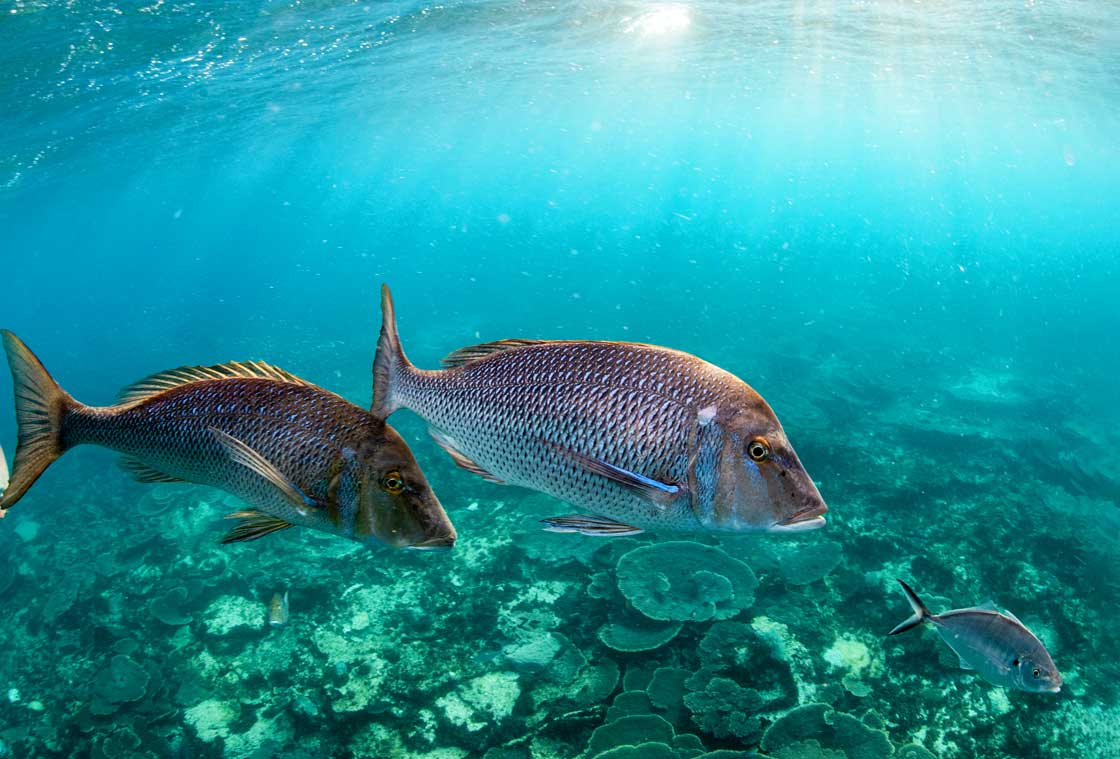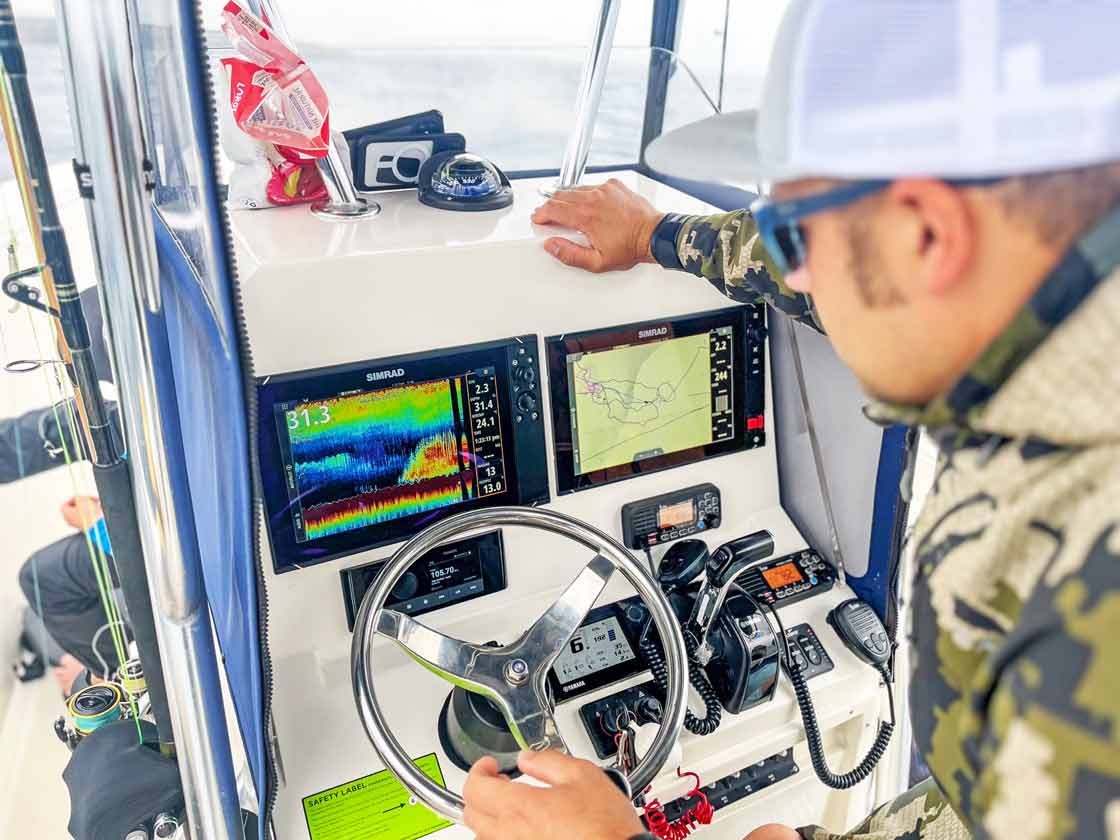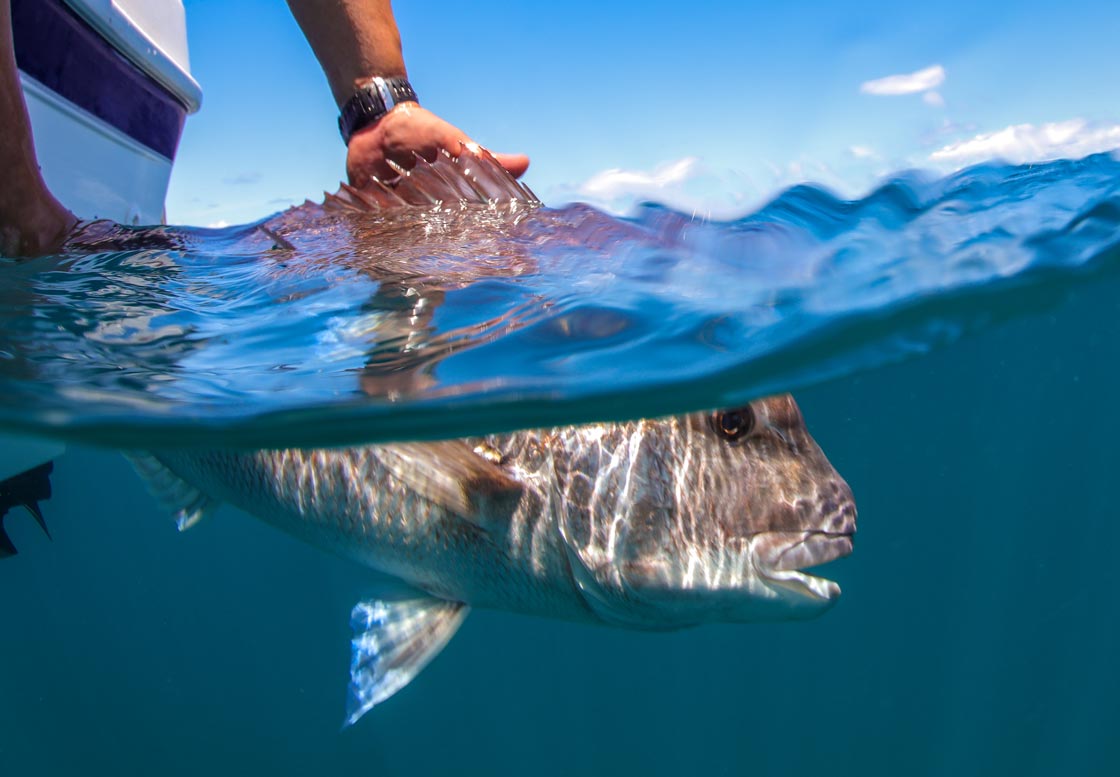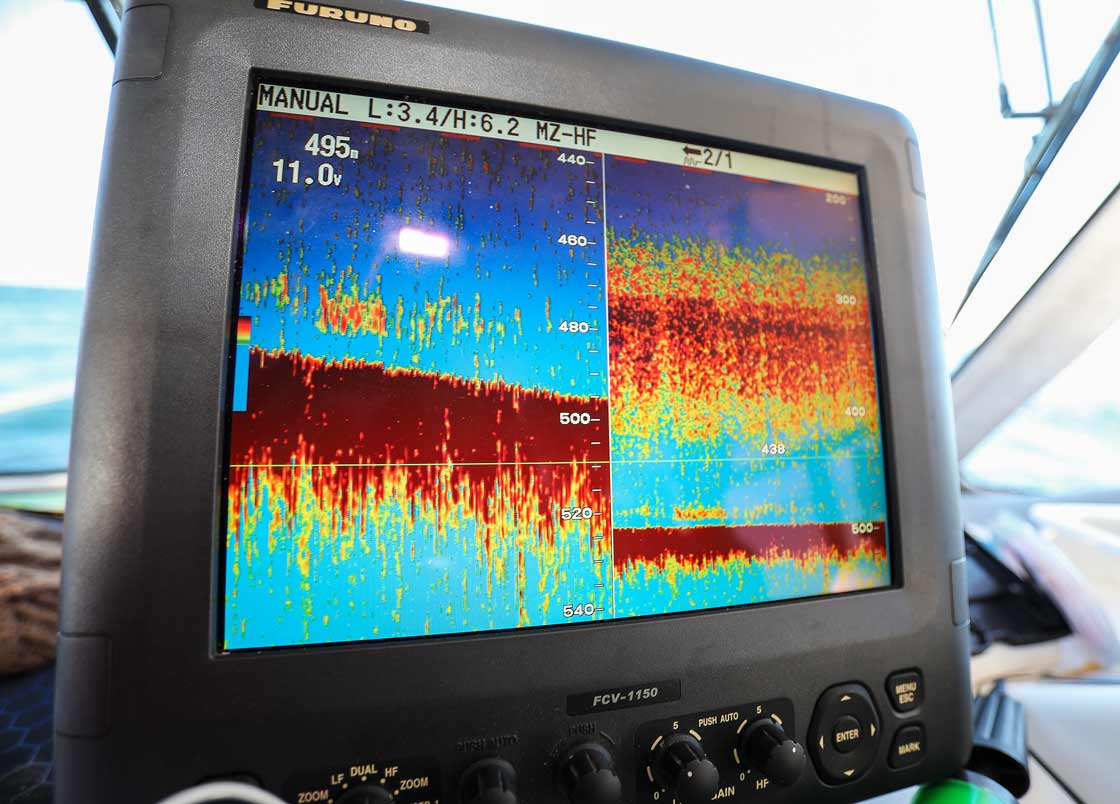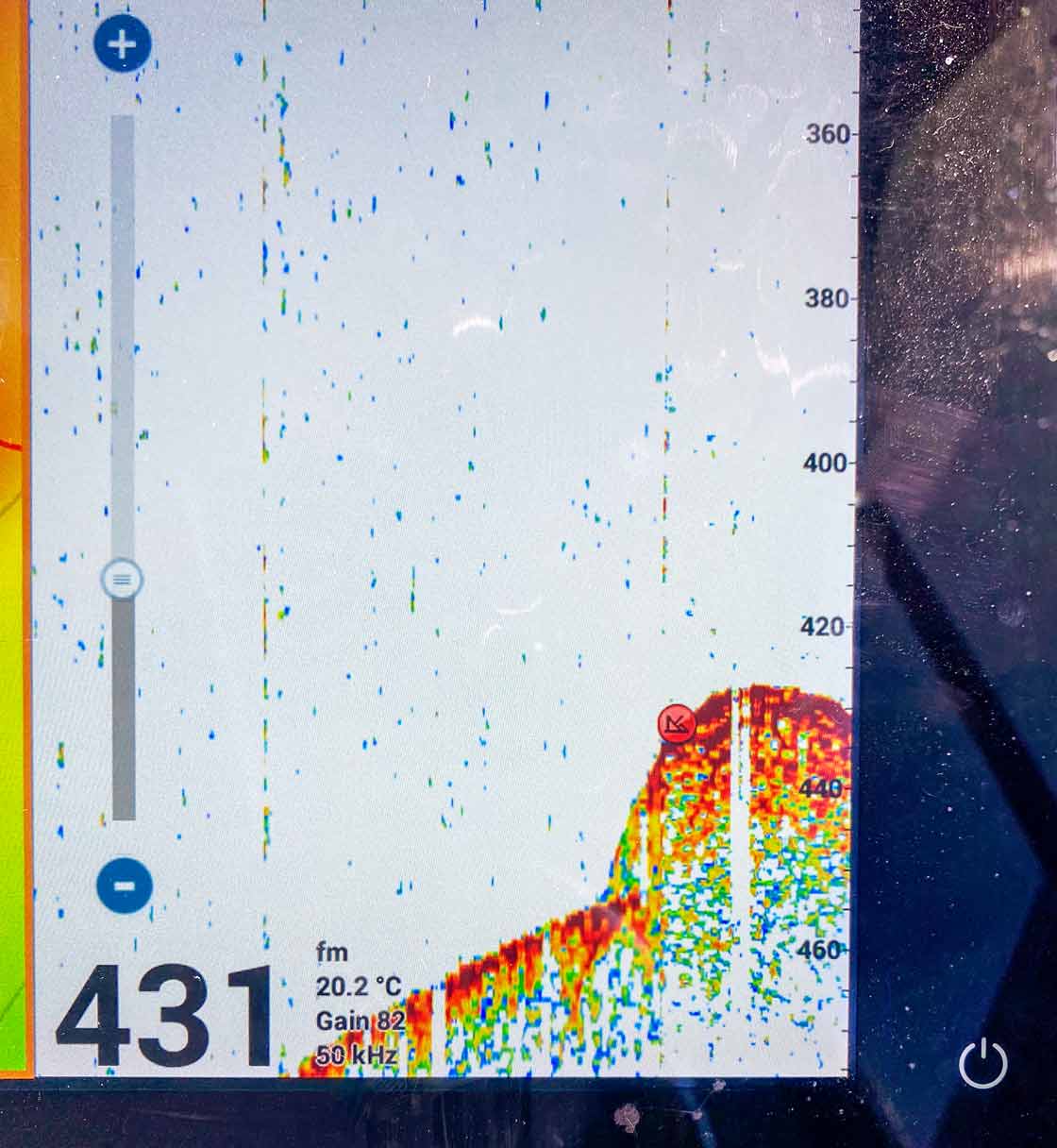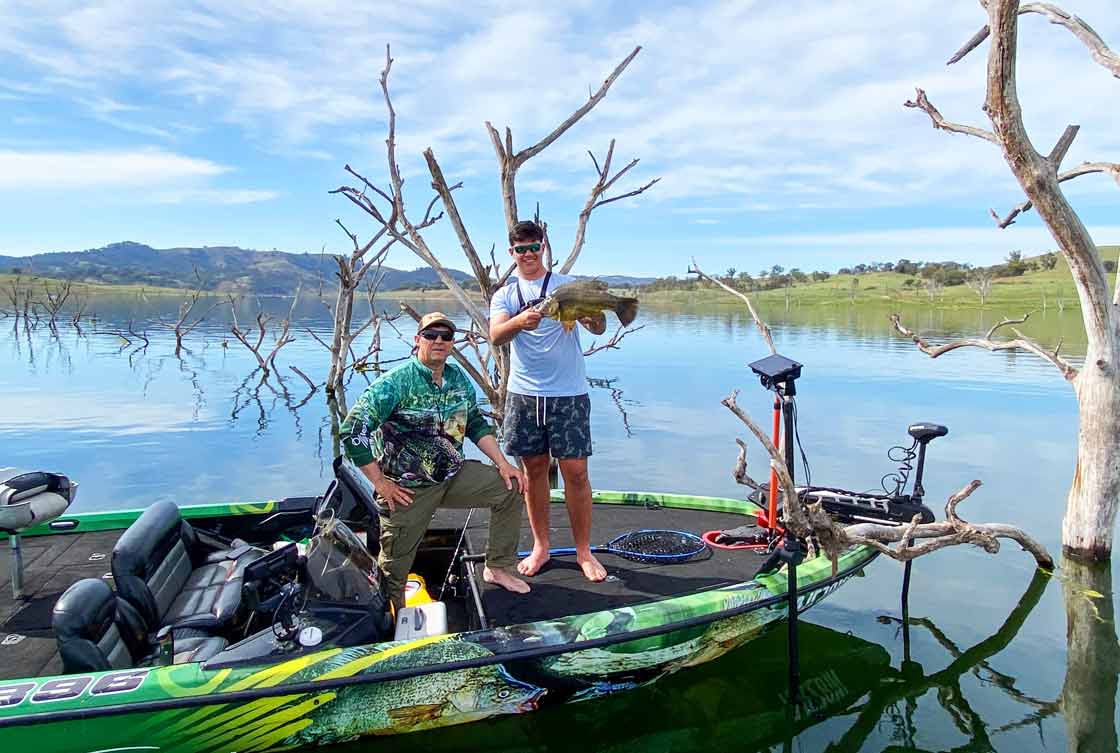An essential step is to first pick the right transducer to suit your needs. Think about where and what you are fishing for, and at what kinds of depths.
The basic difference between transducers is power. Like a car, the bigger the engine, the more powerful it will be.
A 300W transducer is like an electric bike – it will get you around town but it has no grunt. This type of transducer is best suited to shallower water like lakes and estuaries.
A 1kW transducer is more powerful and will work out to the shelf and beyond, but it still won’t always read detail if you’re deep-dropping for the likes of blue eye.
If you want to go deep, then a 2kW or even 3kW transducer will punch the signal down deep.
There are different frequencies and variations in beam width as well. For example, a 200kHz beam is a wide beam that covers a greater area to pick up more information and fish. A narrow beam like 60kHz will punch deeper but, being thinner, won’t capture as much data.
All of this means that you need multiple transducers if fishing offshore and inshore. To give you an idea, in my Northbank I run four transducers and two Furuno screens: SS175HW is my wide angle to find predators and bait, while SS175L and 82B are all about marking the bottom in water a kilometre deep. The final transducer is a WASP, a super-wide version that maps the bottom and helps to find bait over a larger area.
Also consider where the transducers are mounted on the hull. If they get any interference then it doesn’t matter how much you spend on the unit, you won’t get a decent read. This is the single biggest problem most anglers have with their transducers.
Research the best place on the hull and be aware that every hull differs. By all means, consult with any community social pages for your boat type, but don’t just accept one opinion. I strongly advise you speak to experts as well.
